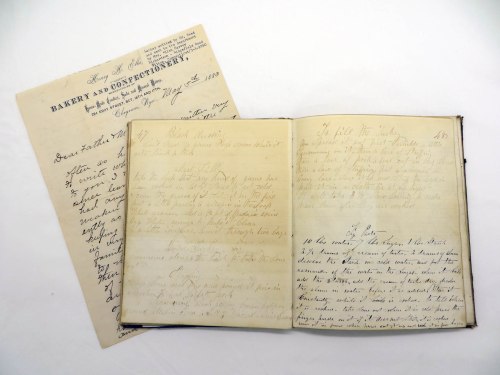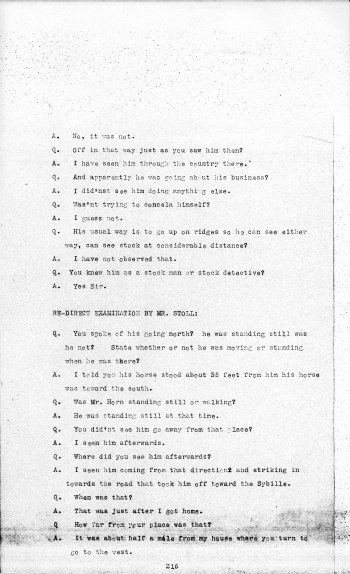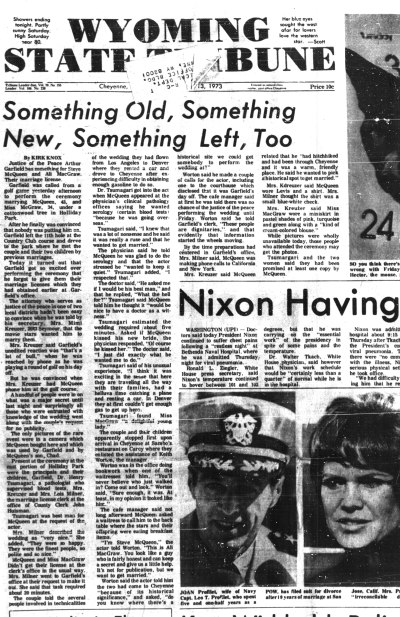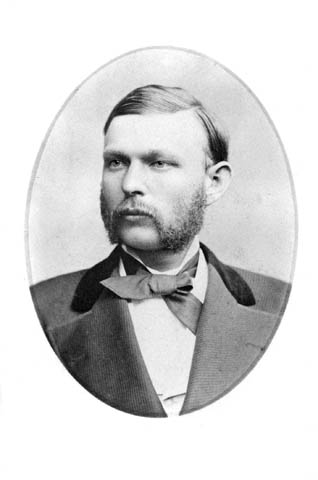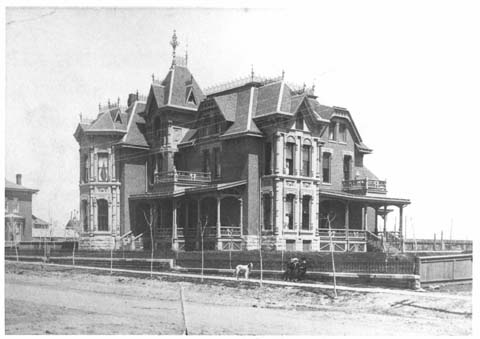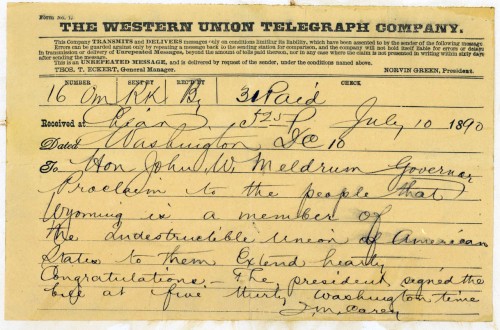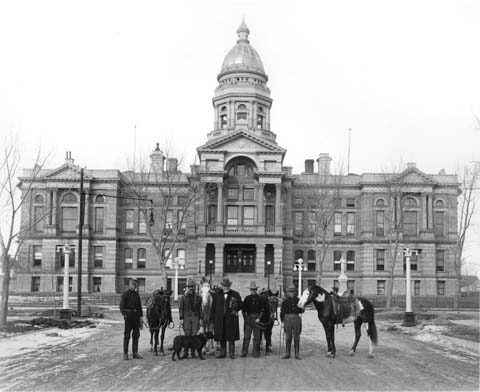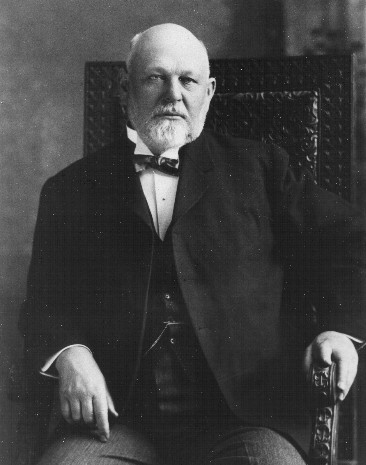Today’s Wyo Whiskers is a mountain man who witnessed the settlement of Jackson Hole and can be considered something of an expert in survival. He as also something of a historian in that he kept extensive journals throughout his life. He once wrote “Oh, I only wish I could give to the world my experience in Indian life and the Rocky Mountains so they could understand it, but I lack education to do it myself.” [1]
Richard “Beaver Dick” Leigh was a red headed, blue eyed Englishman who sought his fortune in the America frontier. He trapped in Canada for the Hudson Bay Company before he joined the Americans and “went for the Mexican War at the close of ’48 attached to E Co. 1st Infantry.” After that, he traveled to the Salt Lake area, where Brigham Young is said to have given him the moniker “Beaver Dick” for his trapping abilities.
Like many trappers and mountain men, Leigh adopted habits from the Native American tribes in the areas he hunted and became fluent in both Bannock and Shoshone languages. The Shoshone called him “Ingapumba” or Red Head. He also took a bride from the tribes named Jenny.
One December night in 1863, Leigh stopped at the isolated camp of a Bannock couple named Pam-Pig-E-Man, called John, and Tadpole. Tadpole was in labor and Leigh acted as midwife. The couple, thankful for his fortuitous services, promised their tiny daughter Susan Tadpole to Leigh in marriage when she came of age. Leigh was 32 years old at the time and newly married, so he thanked them but did not accept the gift.
Leigh and his wife Jenny built the first cabin in the Teton Basin. Several small trading posts had been established in the Valley and Leigh frequently traded his raw furs at Market Lake, north of present day Roberts.

Part of Hayden’s survey party at their North Geyser Basin Camp in Yellowstone. Artist Thomas Moran and photographer William Henry Jackson are both in the picture.
(WSA Jackson Neg 56, Sub Neg 4334)
In 1872, Leigh became the guide for the G.V. Hayden’s assistants during his first USGS Survey into the Tetons and Yellowstone.[2] Jenny and their four children traveled and camped with the party. Expedition photographer William Henry Jackson took what became an icon photograph of the family in front of their tepee camp. [3] Jenny Lake and Leigh Lake were named in honor of Leigh and his wife during this expedition.
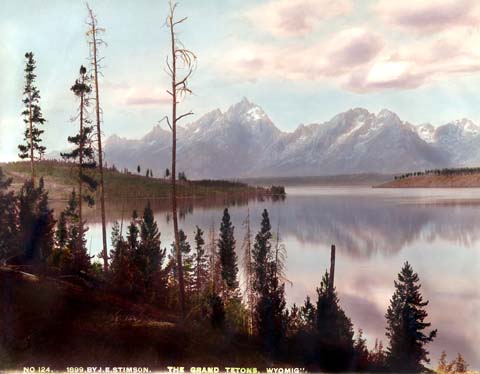
Jenny Lake at the foot of the Grand Tetons was named for Leigh’s first wife Jenny who accompanied Hayden’s first USGS survey party to the area
(WSA J.E. Stimson Collection Neg 124E, 1899, hand-tinted by photographer)
In December 1876, Leigh, Jenny, and their now 5 children took in the wife and small child of another trapper in the area. The woman was very heavy with child, as Jenny herself was, and both her and her child were starving. After feeding them and giving them shelter, the woman told them her husband had died of smallpox. Horrified at the idea of endangering his family, Leigh insisted that the woman and her child leave their camp. The woman died a few days later of small pox and once again, the Leighs took pity on the small child hoping she had been spared by the illness. After playing with their children for 4 days, the tell tale red bumps start to appear on her, too. About this same time, Jenny gave birth to their sixth child. Leigh never mentions whether the child was a boy or girl. Within 2 weeks, Jenny and all six children are dead of smallpox. Though he too had taken ill, Leigh recovers. He writes later “God has spared me for some work or other. I believe I am prepared to do it whatever it is.” The graves of his family are just above Teton Dam.
In 1877 and 1878, as tensions between the Bannocks and US military were escalating, Leigh led Hayden’s second survey of the region. By July 1878, Leigh had once again made it to Fort Hall, Idaho, and was serving as a scout and hunter for the troops stationed there. John and Tadpole, the couple Leigh had helped 15 years earlier were also at Fort Hall. John had been one of the leaders in the Bannock War but had lost his will to fight. The family came to Fort Hall to surrender. As tensions in the area continued to escalate, Leigh noted in his journal “Whether we get clear or lose our hair remains to be seen in the next three days…I have not been in as tight a place since 1863.”
Both Leigh and the Bannock family survived the next few days and all made it to Fort Brown (later called Fort Washakie), and John may have been one of the hostile Bannocks held prison at the fort that Hayden’s photographer W.H. Jackson captured in his photographs that October.
In 1879, Leigh did indeed marry Susan Tadpole, the baby promised to him 16 years earlier. The couple continued to live in the Teton Basin and raised three children. Like Jenny and her children, Leigh’s second family often accompanied him while he a guided surveys and hunting parties in the area.

Richard “Beaver Dick” Leigh and his second family. L-R: Sue Tadpole, William, Emma, Leigh and Rose.
(WSA 2382)
As Native American hostilities declined, sportsmen from around the world flocked to the Jackson region in search of trophies. One of these sportsmen was Theodore Roosevelt. After a chance meeting, Leigh helped to guide Roosevelt’s hunting party and had great respect for the man who would shoot and clean his own game. Leigh’s daughter Emma, who was 10 years old at the time, also remembered Roosevelt fondly. She had been spanked by him for mouthing off but was later given a rifle which she treasured for many years.
In March 1899, Leigh passed away after an intense illness and stroke at the age of about 68. Up until the end, he documented his life through writing, as was his habit, by writing to good friends. He is buried in Rexburg, Idaho, on a hill overlooking his second homestead.[4]
____________
1. Several of Leigh’s diaries and letters are preserved at the University of Wyoming’s American Heritage Center. Transcriptions and digitized versions of some can also be viewed online. http://rmoa.unm.edu/docviewer.php?docId=wyu-ah10512.xml
2. The first Hayden Expedition discovered that the Tetons were 30 miles East of where earlier cartographers had placed them, which meant that they were actually located just inside Wyoming, rather than in Idaho. Hayden’s assistants James Stevenson and N. P. Langford also claimed to have climbed the Grand Teton during this expedition. A bitter debate followed and eventually, William Owen and his 1898 party were declared the first to reach the summit. Langford would become the first superintendent of Yellowstone National Park.
3. The Jackson Hole Historical Society’s collection includes a copy of the Jackson’s photograph of Leigh and his first family. http://www.jacksonholehistory.org/explore/history/trappers/attachment/beaver-dick-leigh/
4. Leigh’s FindAGrave.com memorial. http://www.findagrave.com/cgi-bin/fg.cgi?page=gr&GRid=97414831













